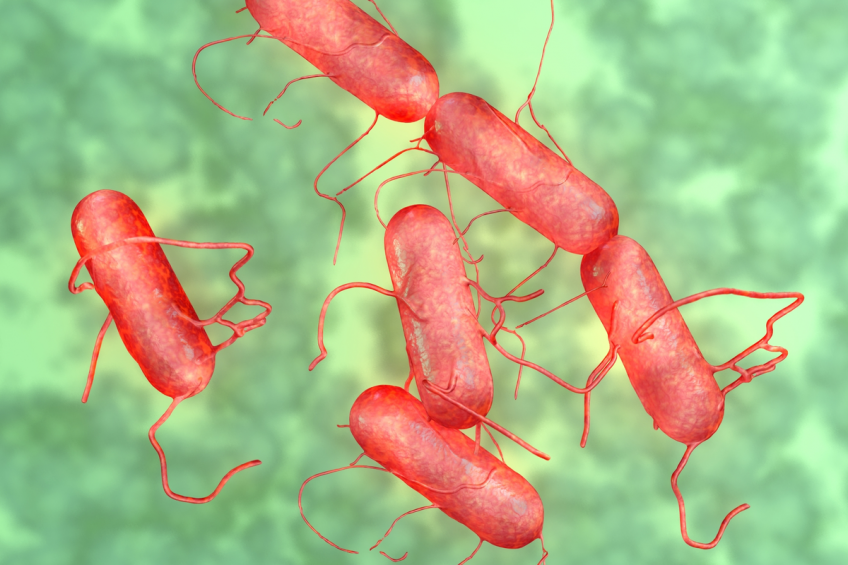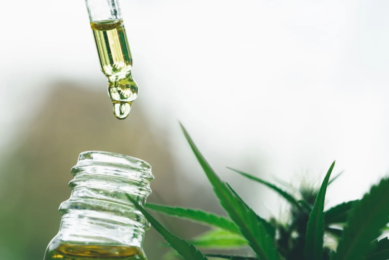Controlling Salmonella with benzoic acid

Since the usage of antibiotics is increasingly under pressure, the search for alternatives is in full swing. For ?Salmonella infections, benzoic acid proves an alternative that achieves ?virtually the same results as antibiotics.
The antimicrobial effects of organic acids on food-borne pathogenic bacteria have been well known since antiquity and result from their ability to create an acidic, and thus unfavourable, environment within which most pathogenic bacteria cannot live and thrive. This is described as a bacteriostatic effect because the bacteria are not directly killed but instead their functions are inhibited resulting in slower growth.
Salmonella
As is shown in the Figure, Salmonella is one of the most frequent food-borne diseases and pork is quite often a source of Salmonella for humans in many countries. In live pigs, Salmonella can be present as a sub-clinical infection, causing mild diarrhoea and depressed growth performance. In severe clinical outbreaks, Salmonella can lead to acute septicaemia and death.
The presence of Salmonella in edible pork products results from animal infection and from poor hygiene in the slaughterhouse. Regulations in the European Union require specific targets to be set in the reduction of Salmonella infection levels in live pigs to reduce the risk of human infection by food-borne Salmonella. It is thus imperative in terms of general population health that effective measures are taken at farm level.
Organic acids
The first efforts in countering Salmonella in pig farms have concentrated around identifying the organic acids most effective against this particular bacteria. For this, two essential steps are required. The first features in vitro (laboratory) microbiological screening of organic acids using strains of Salmonella collected from infected pigs. The second takes the in vivo approach using actual animals to verify the results of the in vitro study under practical conditions.
In vitro screening
DSM’s microbiology team at CRNA (Research Center for Animal Nutrition) has conducted an extensive in vitro study with ten organic acids screened under a variety of conditions. For this study three Salmonella serovars were collected from the intestinal contents of infected pigs. These – typhimurium, derby, and enteritidis – represent the Salmonellosis most likely to be found in pigs worldwide. The test suspension broth contained 105 CFU (colony forming units), a number adequate for causing infection in young pigs. Two indexes were used to assess the effectiveness of each organic acid against Salmonella. The first was the Minimum Inhibitory Concentration (MIC) representing the minimum concentration of each organic acid required to stop the growth of Salmonella (bacteriolytic effect). The second was the Growth Retardation (GR) index, representing the percentage level of reduction in Salmonella growth over a defined time period (bacteriostatic effect).
Results indicated that at high concentrations (above 25 mmol/l) all organic acids were equally capable of stopping Salmonella growth. However, when concentration was reduced the most effective acids proved to be sorbic, benzoic, and citric. Indeed, MIC50 (50% inhibition of growth) with these acids was achieved at about half, or less than half, the concentration required for all other acids (see Table 1). These results were more or less comparable among all three serovars.
Growth retardation results revealed that benzoic acid, followed by citric and then sorbic acid, retarded growth by 32, 17, and 16% more than all the other organic acids, which were practically ineffective in this respect. Again, similar results were obtained with all three serovars tested.
Under neutralised conditions, such as those when stomach contents reach the small intestine, only sorbic (6%) and benzoic acid (13%) retained antimicrobial activity. From all these indications based on in vitro studies, the team selected benzoic acid as the best candidate against Salmonella infection.
In vivo studies
The first trial involved 96 pigs at about 42 kg liveweight. All animals were infected with 109 CFU of Salmonella and growth performance was monitored during the following 90 days. As expected, growth was depressed in all infected animals. Those receiving antibiotics specific against Salmonella had the least overall growth depression with daily liveweight gain averaging 848 g. The only other group that resisted growth depression as well as the group receiving antibiotics was that receiving benzoic acid at 5 kg/tonne of feed with 830 g average daily liveweight gain. Other treatments, including a yeast additive and a plant extract, were virtually ineffective, growth depression being quite severe in such cases. Interestingly, the least growth depression in the period immediately following the infection was observed in the group receiving benzoic acid and not in the group receiving antibiotics, as might have been expected.
This led to the second trial wherein 120 pigs (18 kg liveweight), previously naturally infected by Salmonella and successfully treated with antibiotics, were observed to note the effects of benzoic acid during the recuperation period. The experimental design was 2×3 factorial with two levels of benzoic acid (zero and 5 kg/tonne) and three different antibiotic treatments (none, virginiamycin 10 ppm and tylosin 110 ppm). After 42 days pigs were tested for any presence of Salmonella.
Results (shown in Table 2) indicated that the use of benzoic acid or antibiotics reduced mortality compared to control. There were no interactive effects in any trait studied in this trial. The benzoic acid treatment resulted in the lowest mortality rate (1.2% versus 6.1% in the negative control). During the first 28 days, benzoic acid or virginiamycin also resulted in the highest growth performance. At the end of the trial, pigs receiving virginiamycin or benzoic acid were 7 and 4 kg heavier than control pigs respectively. Although benzoic acid did not replace the therapeutic properties of an antibiotic (in this case tylosin) for unspecific respiratory diseases, it obviously helped in the control of the disease giving excellent results, better than the ones where virginiamycin was used as antibiotic growth promoter.
Similar results have been observed under other more commercial conditions: the monitoring of 41 farms by German veterinarians Erwin Sieverding and Kerstin Bode showed that feed supplementation with 0.5% benzoic acid during the fattening period significantly reduced detected Salmonella. Both the detection of Salmonella in anal swabs from pigs and the serological detection rates in meat juice at slaughter decreased (see Figure).
Conclusions
Results of both in vitro and in vivo clearly showed that VevoVitall (DSM), an ultra-pure grade of benzoic acid, is the most potent organic acid and one offering results very close to those supported by antibiotics specific for Salmonella.
References available on request
.






